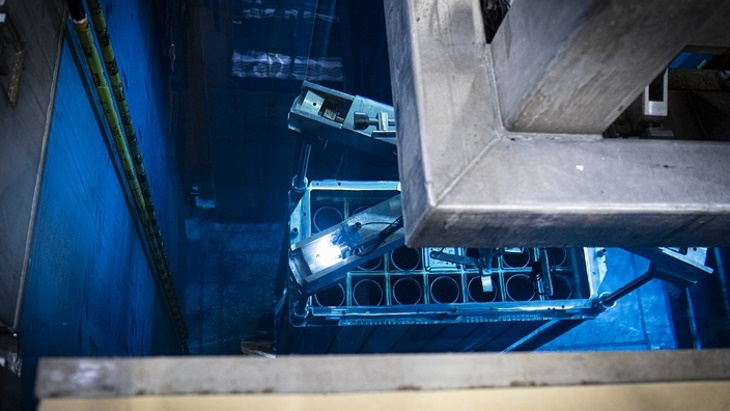The Thermal Oxide Reprocessing Plant (Thorp) plant ceased reprocessing in 2018 after 24 years of operation. The facility is now being used to store used nuclear fuel until the 2070s.
In order to increase the storage capacity of the Thorp receipt and storage ponds, a new design of fuel can storage rack has been developed. These new racks - known as 63-can racks - are taller but have a smaller footprint than the previous design. Each rack can store 63 fuel cans, while current storage compartments can hold up to 20 fuel cans.
Fuel that was already being stored in the pond is being transferred into the new storage racks and all future fuel receipts will be stored in this way.
"Since the change of approach to managing spent fuel, it was clear we would need to innovate to be able to safely store everything we need to in the Thorp pond," said Roddy Miller, Sellafield Ltd's nuclear operations director. "These racks will increase fuel capacity from 4000 tonnes to 6000 tonnes, meaning we can accommodate all current and future arising, negating the need for a new storage facility.
"It's a great example of collaboration between ourselves, the Nuclear Decommissioning Authority Group, EDF Energy, and our supply chain. Everyone involved should be proud of their contribution."
Weighing 7 tonnes and standing 5.5 metres high, the stainless steel containers are being built by a consortium of Cumbrian manufacturers (including Carlisle-based Bendalls Engineering and Workington's West Cumberland Engineering) and Stoke-based Goodwin International. Between them, they will manufacture 160 racks. Another 340 racks will be needed in the future.
Because fuel will be stored for longer than was originally intended, the pond at Thorp has required other alterations including raising the pH level to avoid corrosion and installing new cooling capacity.
Three of the UK's seven AGR plants are currently in the defueling stage: Hunterston B, Hinkley Point B and Dungeness B. Four AGR plants are still in operation. Heysham 1 and Hartlepool are currently expected to operate until March 2026. Heysham 2 and Torness are currently due to generate until March 2028.





_47120.jpg)

_23621.jpg)






